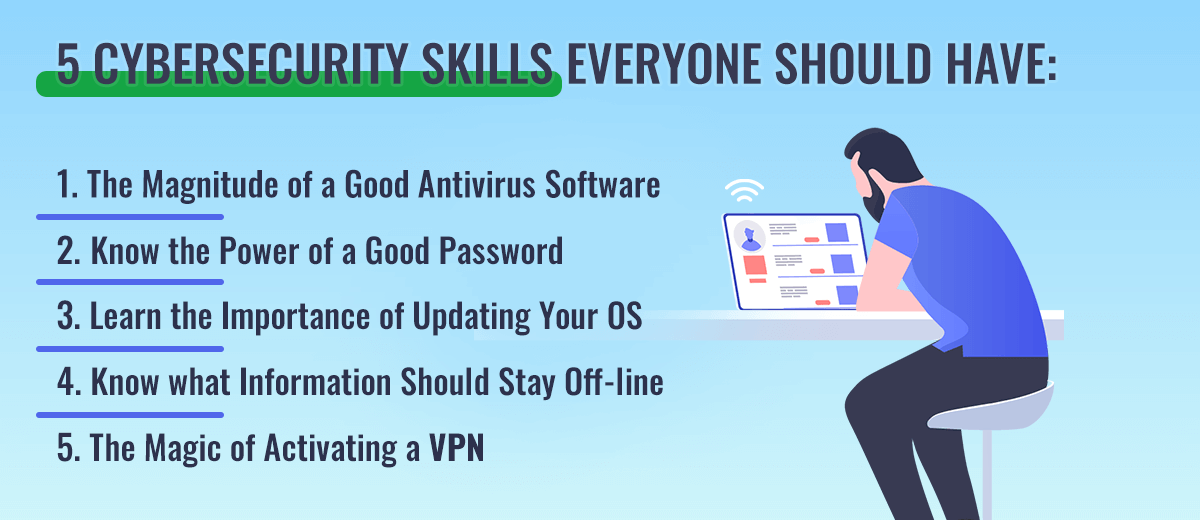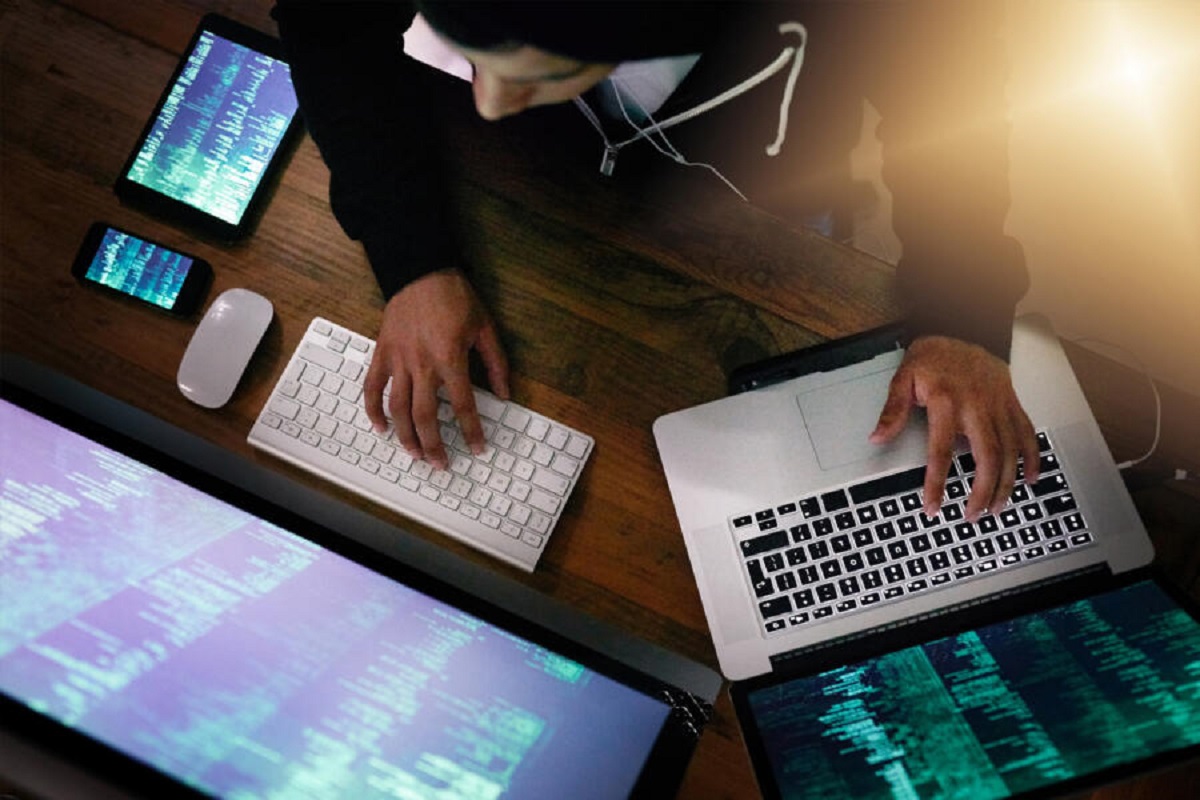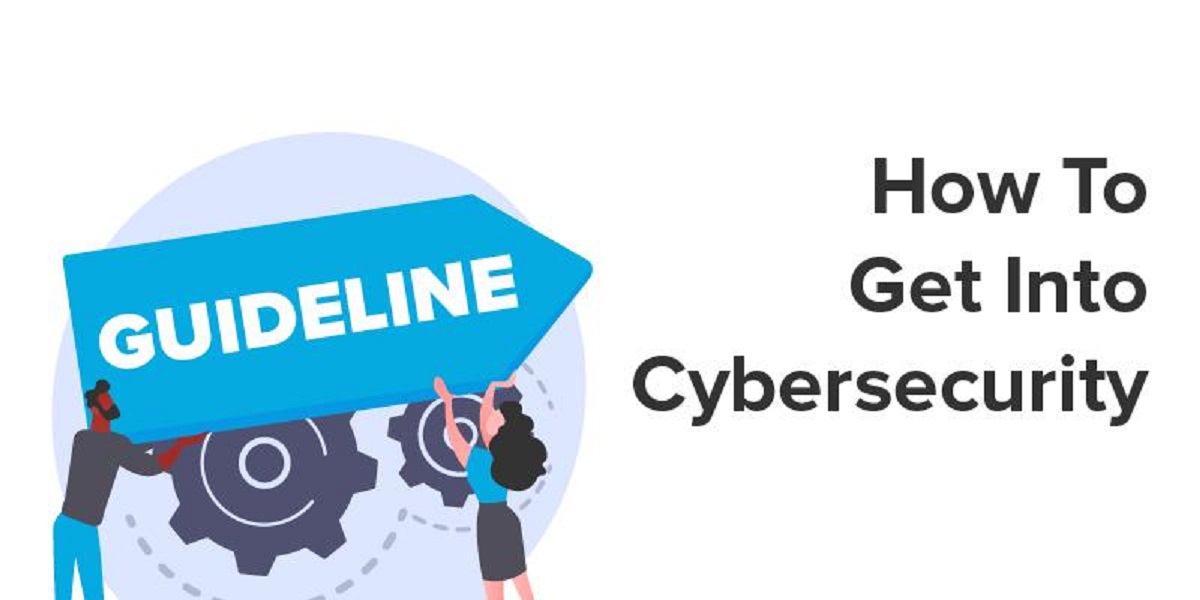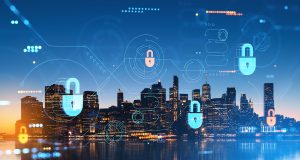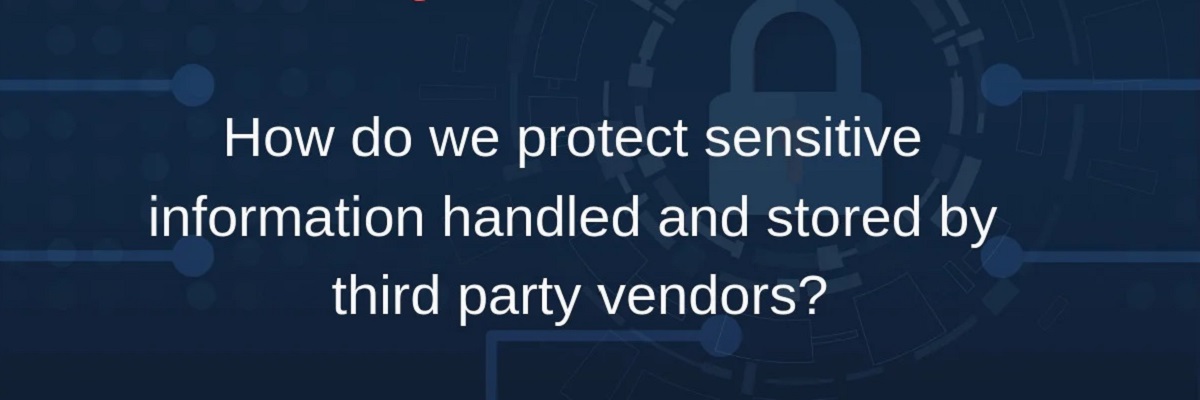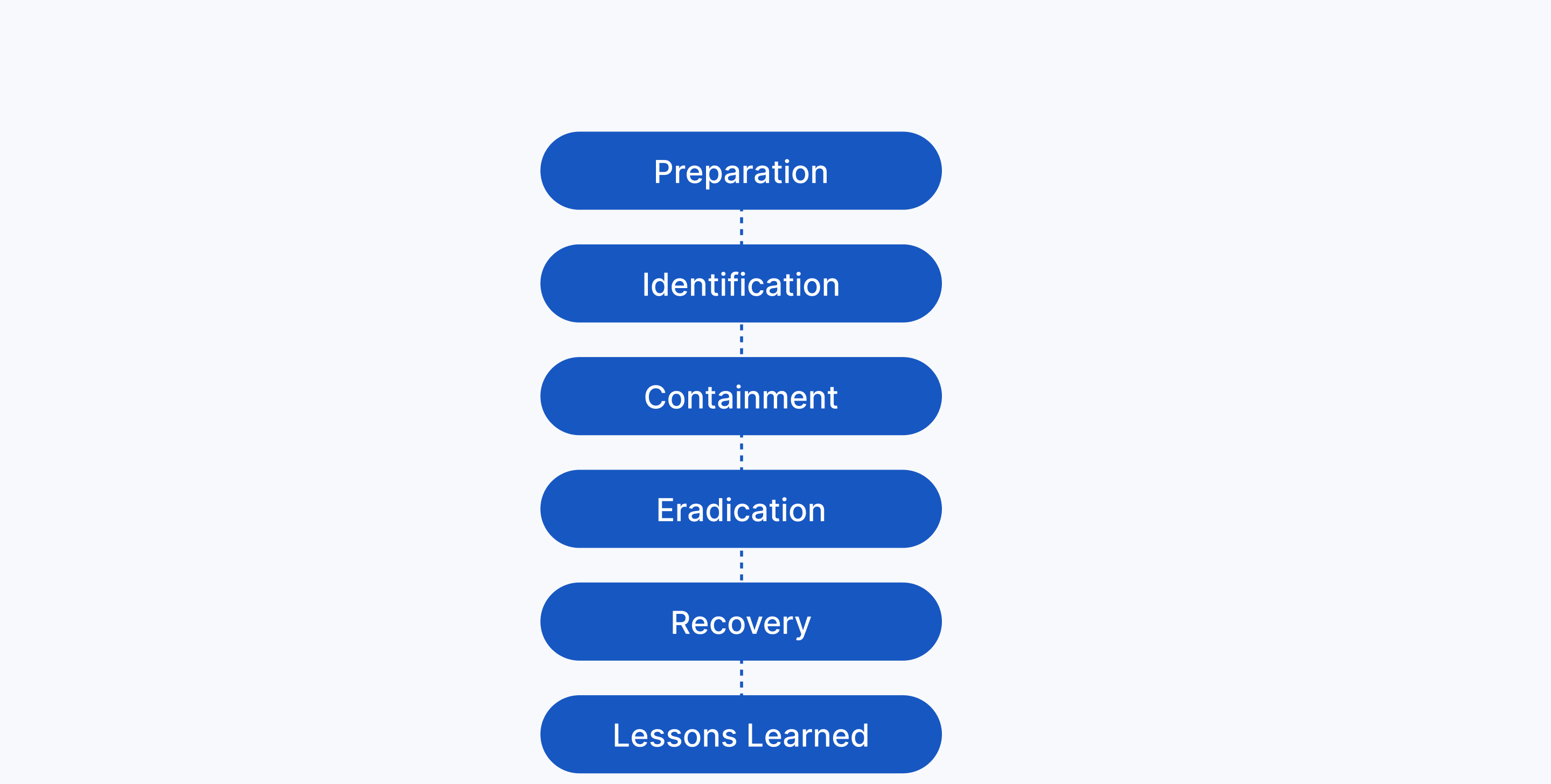The Importance of Cybersecurity
In today’s digital age, cybersecurity has become increasingly vital. With the constant advancement of technology and the prevalence of online activities, it has become essential to understand and address the risks posed by hackers, cybercriminals, and malicious software. The importance of cybersecurity cannot be overstated, as it encompasses protecting your personal information, safeguarding your finances, preserving your digital identity, securing your devices and networks, and staying safe online.
One of the primary reasons to prioritize cybersecurity is to protect your personal information. With the amount of data we share and store online, from social media profiles to online banking credentials, we expose ourselves to potential data breaches. Cybercriminals can exploit this information, leading to identity theft, financial loss, and other harmful consequences. By implementing robust security measures, such as strong passwords, encryption, and two-factor authentication, you can mitigate the risk of unauthorized access to your sensitive information.
Furthermore, cybersecurity plays a crucial role in safeguarding your finances. Online banking, mobile payment apps, and e-commerce platforms have become the go-to methods for managing transactions and making purchases. However, these conveniences come with risks. Without proper cybersecurity measures, hackers can intercept your financial data or gain access to your online accounts, resulting in unauthorized transactions, drained bank accounts, or even credit card fraud. By staying vigilant and employing security practices, you can protect yourself from these threats.
In addition to personal information and financial data, cybersecurity helps preserve your digital identity. Your online presence, including your social media profiles, email accounts, and online portfolios, is a representation of your identity. Cybersecurity measures, such as regularly updating your passwords, being cautious of phishing scams, and using secure browsing protocols, can prevent unauthorized individuals from impersonating you or manipulating your digital footprint.
Securing your devices and networks is another critical aspect of cybersecurity. With the increasing number of connected devices, including smartphones, tablets, laptops, and IoT devices, it is essential to safeguard them from potential vulnerabilities. Updating your operating systems, using reliable antivirus software, and configuring secure Wi-Fi networks all contribute to maintaining the integrity of your devices and protecting them from malware, viruses, and other cyber threats.
Moreover, understanding the impact of cyberattacks is vital in recognizing the importance of cybersecurity. Cyberattacks can have far-reaching consequences, not only on individuals but also on organizations, governments, and society as a whole. From data breaches that compromise millions of personal records to ransomware attacks that paralyze businesses, cyberattacks can cause significant financial, reputational, and societal damage. By being aware of these risks and taking proactive measures, such as regular backups and intrusion detection systems, we can lessen the impact of potential attacks.
Developing good cybersecurity habits and staying informed about common cyber threats are essential components of staying safe online. By staying up-to-date with the latest security practices, being cautious of suspicious emails, and avoiding clicking on unfamiliar links, we can reduce the likelihood of falling victim to cyberattacks. Regularly educating yourself about emerging threats and the best practices for cybersecurity empowers you to take control of your online safety.
In today’s interconnected world, cybersecurity should be a priority for individuals and organizations alike. By understanding the risks, protecting personal information and finances, preserving digital identities, securing devices and networks, and staying informed about cyber threats, we can navigate the digital landscape with greater confidence and safety.
Understanding Cybersecurity Risks
In the realm of cybersecurity, understanding the various risks that exist is crucial for protecting oneself and mitigating potential threats. Cybersecurity risks encompass a wide range of vulnerabilities, including malware attacks, phishing scams, data breaches, identity theft, and more. By gaining a deeper understanding of these risks, individuals can take the necessary steps to safeguard their digital lives.
One prevalent cybersecurity risk is malware attacks. Malware, short for malicious software, includes viruses, worms, trojans, and ransomware. These software programs are designed to infiltrate computers, networks, and other electronic devices, causing damage, stealing sensitive information, or encrypting data for ransom. To combat malware attacks, individuals should regularly update their operating systems, utilize reputable antivirus software, and exercise caution when opening email attachments or downloading files from untrusted sources.
Another common cybersecurity risk is phishing scams. Phishing involves fraudulent attempts to obtain sensitive information, such as passwords, credit card details, or social security numbers, by posing as a trustworthy entity. Phishing attacks often come in the form of deceptive emails, instant messages, or deceptive websites that redirect users to fake login pages. To counter phishing risks, individuals should be cautious when clicking on links or downloading attachments, verify the authenticity of websites and email senders, and refrain from sharing personal information through unofficial channels.
Furthermore, data breaches present a significant cybersecurity risk in today’s interconnected world. Data breaches occur when unauthorized individuals gain access to confidential or sensitive data, often through weak security measures or human error. These breaches can result in the exposure of personal information, including names, addresses, credit card numbers, and social security numbers. To reduce the risk of data breaches, individuals should prioritize data encryption, use unique and strong passwords, enable two-factor authentication, and stay updated on privacy settings for various online platforms.
Identity theft is a major concern in cybersecurity. It involves unauthorized individuals obtaining personal information to impersonate someone else, resulting in financial losses, damaged credit, and reputational harm. Identity theft can occur through various cyber-attack methods, such as phishing, social engineering, or hacking into databases. Individuals should be cautious about sharing personal information online, regularly monitor their financial accounts, and use identity theft protection services to mitigate the risk of falling victim to this type of cybercrime.
Additionally, there are emerging cybersecurity risks related to the Internet of Things (IoT). As more devices become interconnected, securing these devices from cyber threats becomes paramount. The IoT poses vulnerabilities due to weak authentication protocols, insufficient firmware updates, and the potential for unauthorized access to interconnected devices. Individuals can mitigate IoT-related risks by using unique passwords for each device, regularly updating firmware, and implementing network segmentation to prevent unauthorized access to personal devices.
Understanding cybersecurity risks is essential for safeguarding oneself in today’s digital landscape. By being aware of malware attacks, phishing scams, data breaches, identity theft, and IoT vulnerabilities, individuals can take proactive measures to strengthen their cybersecurity defenses. Regularly updating software, exercising caution online, using strong passwords, and staying informed about emerging threats are crucial steps in protecting against the ever-evolving landscape of cyber risks.
Protecting Your Personal Information
In the digital age, protecting personal information has become a top priority due to the growing risk of data breaches and identity theft. Safeguarding personal information involves implementing various security measures and adopting safe online practices. By taking proactive steps to protect personal information, individuals can mitigate the risk of falling victim to cyber threats.
One essential step in protecting personal information is creating strong and unique passwords. Weak passwords can easily be cracked by hackers, allowing unauthorized access to sensitive accounts. Optimal passwords should include a combination of uppercase and lowercase letters, numbers, and special characters. It’s crucial to avoid using easily guessed passwords, such as birthdates or common words. Additionally, using a different password for each online account can help minimize the damage in case of a security breach.
Another effective strategy is enabling two-factor authentication (2FA) whenever possible. 2FA adds an extra layer of security by requiring users to provide a second verification factor, such as a unique code sent to a mobile device, in addition to their password. This additional step enhances security and prevents unauthorized access even if a password is compromised.
Being cautious with personal information is essential. Avoid providing sensitive data, such as Social Security numbers or financial information, through unsecured channels or to unknown individuals or websites. It’s important to verify the legitimacy of websites before entering personal information or making purchases. Look for ‘https://’ in the website’s URL and a padlock icon indicating a secure connection.
Regularly updating software and operating systems is another crucial step in protecting personal information. Software updates often include security patches that address vulnerabilities and protect against emerging threats. By keeping software up to date, individuals can benefit from enhanced security features and reduce the risk of exploitation.
Public Wi-Fi networks can present significant risks to personal information security. It’s best to avoid accessing sensitive accounts or making financial transactions when connected to public Wi-Fi as these networks are often unsecured and can be easily intercepted. If using public Wi-Fi is necessary, individuals should consider connecting through a virtual private network (VPN) to encrypt their internet connection and protect their data.
Regularly monitoring financial and online accounts is crucial for identifying any suspicious activity that may indicate a breach or unauthorized access. Individuals should review bank statements, credit card bills, and other financial transactions regularly for any discrepancies. Additionally, setting up account alerts can provide real-time notifications of any unusual activity, enabling prompt action to address potential security issues.
Lastly, staying informed about the latest cybersecurity threats and trends is crucial for protecting personal information. Following reputable cybersecurity blogs, news websites, and experts can provide valuable insights into emerging threats and best practices for protecting personal data. By staying knowledgeable, individuals can adapt their security measures and stay one step ahead of cybercriminals.
In summary, protecting personal information is of utmost importance in today’s digital landscape. By creating strong passwords, enabling two-factor authentication, being cautious with personal information, regularly updating software, avoiding public Wi-Fi networks, monitoring financial accounts, and staying informed about cybersecurity threats, individuals can enhance their personal information security and minimize the risk of falling victim to cyber threats.
Safeguarding Your Finances
In an increasingly digital world, safeguarding your finances is a critical aspect of maintaining financial security and protecting yourself from cyber threats. With online banking, digital payment platforms, and e-commerce becoming the norm, it is essential to implement effective strategies for protecting your financial information and transactions.
One fundamental practice for safeguarding your finances is to regularly monitor your financial accounts. Keeping a close eye on your bank statements, credit card transactions, and other financial activities allows you to quickly identify any unauthorized or suspicious charges. By promptly reporting any discrepancies to your financial institution, you can take appropriate action to prevent further financial harm.
Using strong and unique passwords for your financial accounts is crucial. Weak passwords can be easily cracked by hackers, exposing your financial information to unauthorized individuals. Opt for passwords that include a combination of uppercase and lowercase letters, numbers and symbols. Avoid using easily guessable passwords, such as your birthdate or sequential numbers. Remember to change your passwords regularly and refrain from using the same password across multiple accounts.
Enabling two-factor authentication (2FA) is another effective measure for safeguarding your finances. 2FA provides an additional layer of security by requiring users to provide a second verification factor, such as a unique code sent to a mobile device, in addition to their password. This extra step makes it significantly more difficult for cybercriminals to gain unauthorized access to your financial accounts, even if they manage to obtain your password.
Being cautious of phishing scams is crucial when it comes to protecting your finances. Phishing attempts often involve fraudulent emails, text messages, or phone calls that impersonate legitimate financial institutions or service providers. These scams aim to trick you into providing your sensitive financial information. To protect yourself, be vigilant and avoid clicking on suspicious links or providing personal information to unsolicited communications. Remember that legitimate institutions will never ask for sensitive information via email or text message.
When making online transactions, prioritize secure and encrypted connections. Look for “https://” in the URL and a padlock icon indicating a secure connection before entering your payment information. Avoid making financial transactions over public or unsecured Wi-Fi networks, as they can be easily intercepted by cybercriminals. If necessary, consider using a virtual private network (VPN) to encrypt your internet connection and protect your data.
Regularly updating your devices and operating systems is crucial for maintaining strong security measures. Software updates often include security patches that address vulnerabilities and protect against emerging threats. By keeping your devices and software up to date, you minimize the risk of falling victim to known security flaws that cybercriminals may exploit.
It is important to be aware of the security measures in place for the financial institutions and services you use. Familiarize yourself with the security features offered by your bank, credit card issuers, and payment platforms. Utilize additional security options, such as transaction notifications and fraud alerts, whenever possible. By leveraging these precautions, you can quickly identify and respond to any suspicious or unauthorized activity.
Educating yourself about the latest financial scams and cybersecurity best practices is crucial for safeguarding your finances. Stay informed through reputable sources, including financial institutions, government websites, and cybersecurity blogs. Being aware of emerging threats and having knowledge of effective security practices will enable you to make informed decisions and protect your financial well-being.
In summary, protecting your finances in the digital age requires proactive measures. By monitoring your financial accounts, using strong passwords and enabling 2FA, staying vigilant against phishing scams, prioritizing secure connections, regularly updating your devices and operating systems, and staying informed about financial scams and cybersecurity best practices, you can safeguard your finances and enjoy greater peace of mind.
Preserving Your Digital Identity
In today’s digital world, preserving your digital identity is crucial to maintaining control over your online presence and protecting yourself from identity theft and other cyber threats. Your digital identity encompasses all the information and activities associated with you online, including social media profiles, email accounts, and online transactions. Preserving your digital identity requires implementing strong security measures, being cautious with your personal information, and actively managing your online presence.
One essential step in preserving your digital identity is to regularly review your privacy settings on social media platforms and other online accounts. Adjusting your privacy settings can help you control who has access to your personal information and limit the visibility of your posts and activities. Customize your privacy preferences to ensure that only trusted individuals can view your content and that you are maintaining the level of privacy you desire.
Another crucial aspect is using unique and strong passwords for all your online accounts. Avoid reusing passwords and opt for a combination of uppercase and lowercase letters, numbers, and special characters. This practice reduces the risk of unauthorized access to your accounts. Consider using a reliable password manager to generate and securely store your passwords, so you don’t have to rely on memory or compromise security by using easily guessable passwords.
Being cautious with the personal information you share online is vital in preserving your digital identity. Avoid oversharing personal details such as your full address, phone number, or financial information on public platforms or to unknown individuals or websites. Cybercriminals can exploit this information, potentially leading to identity theft, fraud, or other harmful consequences.
Regularly monitoring your online accounts is essential for preserving your digital identity. Check your email accounts, social media profiles, and other online platforms for any suspicious activity or unfamiliar logins. If you notice any unauthorized access, immediately change your passwords and report the incident to the platform administrators. Staying alert and proactive can help you detect and mitigate potential threats before they cause significant harm.
Employing two-factor authentication (2FA) is a powerful tool in preserving your digital identity. 2FA adds an extra layer of security by requiring a second verification factor, such as a unique code sent to your mobile device, in addition to your password. This additional step makes it significantly more difficult for cybercriminals to gain unauthorized access to your accounts, even if they manage to obtain your password through hacking or phishing attempts.
Regularly reviewing your online presence and conducting regular internet searches can help you identify any online content or information that may compromise your digital identity. If you find outdated or inaccurate information, reach out to the website administrators or content creators to request its removal or correction. Additionally, be wary of sharing personal or sensitive information on public or unsecured websites and forums.
Understanding and being aware of common online scams is crucial in preserving your digital identity. Stay informed about current phishing techniques, email scams, and other methods used by cybercriminals to trick individuals into revealing personal information or installing malware. By being aware of these risks, you can avoid falling victim to scams and protect your digital identity.
In summary, preserving your digital identity is of utmost importance in today’s interconnected world. By regularly reviewing and adjusting your privacy settings, using strong and unique passwords, being cautious with your personal information, monitoring your online accounts, employing two-factor authentication, managing your online presence, and staying informed about online scams, you can maintain control over your digital identity and protect yourself from potential cyber threats.
Securing Your Devices and Networks
In today’s digital landscape, securing your devices and networks is paramount to protect yourself from cyber threats and maintain the privacy and integrity of your data. With the increasing dependence on technology and interconnected devices, implementing robust security measures is crucial to safeguard against unauthorized access, malware, and other potential risks.
One fundamental step in securing your devices is to keep them up to date with the latest software and firmware updates. Manufacturers regularly release updates that contain security patches to address vulnerabilities and protect against emerging threats. By regularly installing these updates, you ensure that your devices have the necessary protections to resist new and evolving cyber threats.
Another essential aspect of device security is using reliable and up-to-date antivirus or anti-malware software. These programs detect and eliminate malicious software, such as viruses, trojans, and spyware, that can compromise the security of your devices and data. Regularly scan your devices for potential threats and keep the antivirus software updated to stay protected against the latest threats.
Securing your devices also involves configuring strong and unique passwords for all your accounts. Avoid using default or easily guessable passwords and opt for combinations of uppercase and lowercase letters, numbers, and special characters. Using a password manager can make it easier to generate and store complex passwords securely. Additionally, consider enabling biometric authentication, such as fingerprint or facial recognition, where available, for an additional layer of security.
Securing your home or office network is equally important. Change the default administrative password on your router and use encryption protocols, such as WPA2, to protect your Wi-Fi network. Additionally, regularly review your network’s settings and disable any unused services or guest networks that could pose security risks. Limiting access to your network helps prevent unauthorized access and protects your devices and data.
Another critical aspect of securing your devices and networks is being cautious when connecting to public Wi-Fi networks. Public networks, such as those found in cafes, airports, or shopping centers, are often unsecured and can expose your data to potential threats. Consider using a virtual private network (VPN) when connecting to public Wi-Fi, as it encrypts your internet traffic and adds an extra layer of security.
Backing up your data regularly is a vital component of device and network security. In the event of a ransomware attack or hardware failure, having a backup ensures that you can recover your data without paying a ransom or enduring potential data loss. Use external hard drives, cloud storage services, or network-attached storage (NAS) devices to create backups regularly and store them in a secure location.
Securing your devices also involves being cautious when downloading and installing software or applications. Stick to reputable sources such as official app stores or official software websites to minimize the risk of downloading malicious software. Additionally, be wary of clicking on suspicious links in emails and messages, as they can lead to phishing attempts or the installation of malware.
Educating yourself about the latest cybersecurity best practices is vital in securing your devices and networks. Stay informed about current threat trends and techniques used by cybercriminals through reputable sources such as cybersecurity blogs or news websites. By staying knowledgeable, you can adapt your security practices and stay one step ahead of potential threats.
In summary, securing your devices and networks is crucial in today’s digital landscape. By keeping your devices and software up to date, using reliable antivirus software, configuring strong passwords, securing your home or office network, being cautious with public Wi-Fi, regularly backing up your data, being cautious when downloading software, and staying informed about cybersecurity best practices, you can enhance the security of your devices and networks and protect yourself from potential cyber threats.
Learning about Common Cyber Threats
In today’s digital age, understanding common cyber threats plays a crucial role in protecting yourself and your digital assets. Cyber threats continue to evolve, and being knowledgeable about these threats empowers you to take proactive measures to prevent security breaches and minimize the risk of falling victim to cybercrime. Learning about the common cyber threats allows you to recognize warning signs, implement effective security measures, and stay ahead of potential risks.
One of the most prevalent and damaging cyber threats is malware. Malware refers to malicious software designed to infiltrate computer systems, disrupt operations, steal sensitive data, or gain unauthorized access. Common types of malware include viruses, worms, trojans, ransomware, and spyware. Understanding how malware spreads and the different forms it can take, such as email attachments, compromised websites, or infected USB drives, helps you to recognize potential threats and take appropriate action.
Phishing is another common cyber threat that involves tricking individuals into revealing sensitive information, such as usernames, passwords, or credit card details. Phishing attempts often arrive via email or messages and impersonate reputable organizations or individuals. Being able to identify suspicious emails, fake websites, or deceptive messages helps you avoid falling victim to phishing scams. Practice caution when clicking on links or downloading attachments from unknown sources, and verify the legitimacy of websites and senders before providing any sensitive information.
Ransomware attacks have gained notoriety in recent years and pose a significant threat to individuals and organizations alike. Ransomware encrypts a victim’s data, rendering it inaccessible until a ransom is paid. These attacks often occur through infected email attachments, malicious downloads, or compromised websites. Regularly backing up your data and employing robust security measures, such as strong passwords, up-to-date software, and email filtering, can help mitigate the impact of a potential ransomware attack.
Social engineering is a cyber threat that exploits human psychology to manipulate individuals into disclosing sensitive information, granting unauthorized access, or performing fraudulent actions. Social engineering attacks can occur through methods such as impersonation, pretexting, or baiting. Recognizing the tactics used by social engineers, such as pretending to be a trusted individual or creating a sense of urgency, allows you to remain vigilant and protect yourself from these types of attacks.
Distributed denial-of-service (DDoS) attacks aim to overwhelm a target system, network, or website with a flood of traffic, rendering it unavailable to users. These attacks often involve a network of compromised devices, known as a botnet, controlled by an attacker. Understanding the risk of DDoS attacks can help organizations implement measures to mitigate their impact, such as traffic filtering, load balancing, or working with internet service providers to enhance network resilience.
Insider threats pose a unique cyber risk, typically involving individuals within an organization who exploit their authorized access to compromise systems, steal sensitive information, or sabotage operations. These threats can be unintentional, such as negligent actions, or malicious, such as disgruntled employees with malicious intent. Educating employees about cybersecurity best practices, implementing security protocols, and monitoring user activity can help detect and prevent insider threats.
By staying informed about common cyber threats and their evolving nature, you can actively protect yourself and your digital assets. Regularly educate yourself about emerging threats through reputable sources, participate in cybersecurity awareness training, and implement effective security measures to safeguard against these risks. Remember, prevention and proactive measures are key in mitigating the potential impact of cyber threats.
Understanding the Impact of Cyberattacks
Cyberattacks have the potential to cause significant and wide-ranging impacts on individuals, organizations, and society as a whole. Understanding the repercussions of cyberattacks is crucial for recognizing the importance of cybersecurity and the need for robust protection measures. From financial losses and reputational damage to compromised personal data and disruption of critical infrastructure, the impact of cyberattacks is far-reaching.
Financial implications are one of the most immediate and tangible impacts of cyberattacks. Organizations may suffer financial losses due to theft of funds, disrupted operations, or the cost of recovering from an attack. Moreover, individuals can experience financial harm from identity theft, compromised payment card information, or fraudulent transactions. The financial costs can be substantial, impacting not only the targeted entities but also the customers or individuals affected by the breach.
Reputational damage is another significant consequence of cyberattacks. Organizations that fall victim to successful cyberattacks often face public scrutiny, loss of trust, and damage to their brand image. Breached companies may encounter a decline in customer confidence, leading to a loss of business and potential legal consequences. Rebuilding a damaged reputation can be a lengthy and costly process, underscoring the importance of robust cybersecurity measures to protect against attacks.
The theft or compromise of personal and sensitive data is a prevalent impact of cyberattacks. Data breaches expose personal information, including names, addresses, social security numbers, and login credentials. This information can be used for identity theft, financial fraud, or other malicious activities. The emotional and personal toll on individuals whose data has been compromised should not be underestimated, highlighting the importance of data protection measures and proactive security practices.
The potential disruption of critical infrastructure is a mounting concern in the digital age. Cyberattacks targeting infrastructure such as power grids, transportation systems, or healthcare facilities can have severe societal consequences. Disruptions to essential services can undermine public safety, impair economic stability, and disrupt the normal functioning of society. The impact of such attacks can be far-reaching, affecting individuals, businesses, and even national security.
Cyberattacks can also result in the loss of intellectual property and trade secrets, impacting the competitiveness and innovation of organizations. The theft of proprietary information can give competitors an unfair advantage, undermine research and development efforts, and erode market positions. Protecting intellectual property through robust cybersecurity measures is vital for sustaining a competitive edge in today’s digital landscape.
Beyond the immediate impacts on individuals and organizations, cyberattacks can have broader societal consequences. Attacks on critical infrastructure or government institutions can undermine public trust and confidence in the stability and security of systems. The erosion of trust in digital technologies can hinder technological advancements, inhibit economic growth, and impede the digital transformation of societies.
Understanding the impact of cyberattacks underscores the urgency and importance of instilling a culture of cybersecurity. Effective cybersecurity measures, such as regular security updates, employee training, incident response plans, and collaborative efforts between public and private sectors, are essential for mitigating the impact of cyberattacks. By safeguarding against these threats, individuals, organizations, and societies can navigate the digital landscape with greater resilience and security.
Developing Good Cybersecurity Habits
Developing good cybersecurity habits is crucial for protecting yourself and your digital assets in an increasingly interconnected world. By integrating cybersecurity best practices into your daily routine, you can minimize the risk of falling victim to cyber threats and enhance your overall online safety. From employing strong passwords to staying vigilant against phishing attempts, adopting these habits will help fortify your digital defenses.
Creating strong and unique passwords is a foundational cybersecurity habit. Your passwords should include a combination of uppercase and lowercase letters, numbers, and special characters. Avoid using easily guessable passwords, such as your birthdate or sequential characters. Additionally, you should use a different password for each online account to minimize the impact of a potential security breach.
Enabling two-factor authentication (2FA) is an effective habit that adds an extra layer of security to your accounts. 2FA requires a second verification factor, such as a unique code sent to your mobile device, in addition to your password. This additional step significantly reduces the risk of unauthorized access, even if your password is compromised.
Regularly updating your software, applications, and operating systems is another vital cybersecurity habit. Software updates often include security patches that address vulnerabilities and protect against emerging threats. By keeping your devices and software up to date, you ensure that you have the latest protections against known security flaws.
Being cautious with your personal information is crucial in maintaining cybersecurity. Avoid sharing sensitive information, such as your Social Security number or financial details unless absolutely necessary. Be cautious when providing personal information online or over the phone, especially if you are not familiar with the recipient or the website. Cybercriminals can exploit this information for identity theft or financial fraud.
Vigilance against phishing attempts is a critical cybersecurity habit. Phishing involves fraudulent communications, such as emails or messages, that impersonate reputable organizations to trick individuals into revealing personal information or clicking on malicious links. Be wary of unexpected requests for personal information, verify the legitimacy of emails and websites before providing any information, and avoid clicking on suspicious links.
Backing up your data regularly is an essential habit to protect against data loss and ransomware attacks. Regular backups ensure that you have a copy of your important files and data in case of hardware failure, accidental deletion, or a ransomware attack. Use external hard drives, cloud storage services, or network-attached storage (NAS) devices for secure and reliable backups.
Staying informed about the current cybersecurity landscape is a proactive habit that enhances your online safety. Keep abreast of emerging threats, new attack techniques, and best practices by following reputable cybersecurity sources, blogs, or news websites. By staying updated, you can adapt your security measures to address the evolving nature of cyber threats.
Using caution when connecting to public Wi-Fi networks is an important cybersecurity habit. Public networks, such as those found in cafes or airports, are often unsecured and can expose your data to potential risks. If you need to use public Wi-Fi, consider using a virtual private network (VPN) to encrypt your internet connection and protect your data from eavesdropping.
Lastly, educating yourself and others about cybersecurity is a valuable habit to develop. Share your knowledge with friends, family, colleagues, and community members to help promote a culture of cybersecurity. By raising awareness and encouraging responsible online behavior, you contribute to a safer digital environment for everyone.
By adhering to these cybersecurity habits and incorporating them into your daily routine, you can significantly reduce your susceptibility to cyber threats. Remember, cybersecurity is a shared responsibility, and by consistently practicing good habits, you contribute to a safer and more secure online ecosystem.
Staying Safe Online
In an increasingly interconnected world, staying safe online is crucial to protect yourself from cyber threats and maintain your privacy and security. Whether browsing the internet, connecting with others through social media, or making online transactions, implementing effective strategies and adopting safe practices is essential. By developing good online habits and remaining vigilant, you can enjoy a safer online experience.
One fundamental practice for staying safe online is to be cautious when clicking on links or downloading files. Cybercriminals often use deceptive techniques to trick users into visiting malicious websites or downloading malware-infected attachments. Hover over links to verify their legitimacy before clicking, and only download files from trusted sources. Additionally, be wary of unsolicited email attachments or links sent by unknown individuals.
Protecting your personal information is critical in maintaining online safety. Be mindful of what you share online, especially on social media platforms. Avoid posting sensitive information, such as your full address, phone number, or financial details. Configure your privacy settings to control who can access your personal information and limit the visibility of your posts. The more you limit the exposure of your personal information, the harder it becomes for cybercriminals to exploit it.
Regularly updating your software and devices is a key habit for staying safe online. Software updates often include security patches that address vulnerabilities identified by developers. Keep your operating system, antivirus software, web browsers, and other applications up to date to ensure you have the latest protections against known security flaws. Set your devices to automatically install updates or regularly check for updates manually.
Being cautious when using public Wi-Fi networks is crucial for online safety. Public networks, such as those in cafes, airports, or hotels, are often unsecured and can expose your data to potential risks. Avoid accessing sensitive accounts or making financial transactions when connected to public Wi-Fi. If necessary, use a virtual private network (VPN) to encrypt your internet connection and add an extra layer of security.
Vigilance against phishing attempts is essential. Phishing is a common method used by cybercriminals to trick individuals into revealing personal information or login credentials. Be skeptical of unsolicited emails or messages asking for personal information or directing you to click on suspicious links. Look for inconsistencies or signs of phishing, such as misspelled URLs or generic greetings in emails that claim to be from legitimate organizations.
Utilizing strong and unique passwords is another vital practice for online safety. Avoid using easily guessable passwords and opt for a combination of uppercase and lowercase letters, numbers, and special characters. Using a password manager can help generate and store complex passwords securely. Remember to change your passwords regularly, especially after any security incidents or data breaches.
Implementing two-factor authentication (2FA) wherever possible provides an extra layer of security for your online accounts. 2FA requires an additional verification factor, such as a unique code sent to your device, on top of your password. This added step significantly reduces the risk of unauthorized access, even if your password is compromised. Enable 2FA for your email accounts, social media profiles, and financial platforms to enhance your online safety.
Educating yourself about the latest cyber threats and security best practices is crucial for staying safe online. Stay informed by following reputable sources, cybersecurity blogs, or news websites. Learn about emerging threats, new attack techniques, and ways to protect yourself and your data. By staying knowledgeable, you can adapt your online habits and security measures to counter evolving cyber threats.
Lastly, trust your instincts and rely on your judgment when engaging online. If something feels suspicious or too good to be true, it likely is. Be wary of offers that seem too tempting or requests for personal information from unknown individuals or sources. When in doubt, verify the legitimacy of websites, emails, or individuals before engaging or providing any sensitive information.
By adopting these practices and cultivating a proactive mindset, you can significantly enhance your online safety. Remember that online threats are ever-evolving, so staying informed and remaining vigilant are key to protecting yourself in the digital realm.







